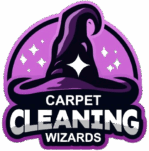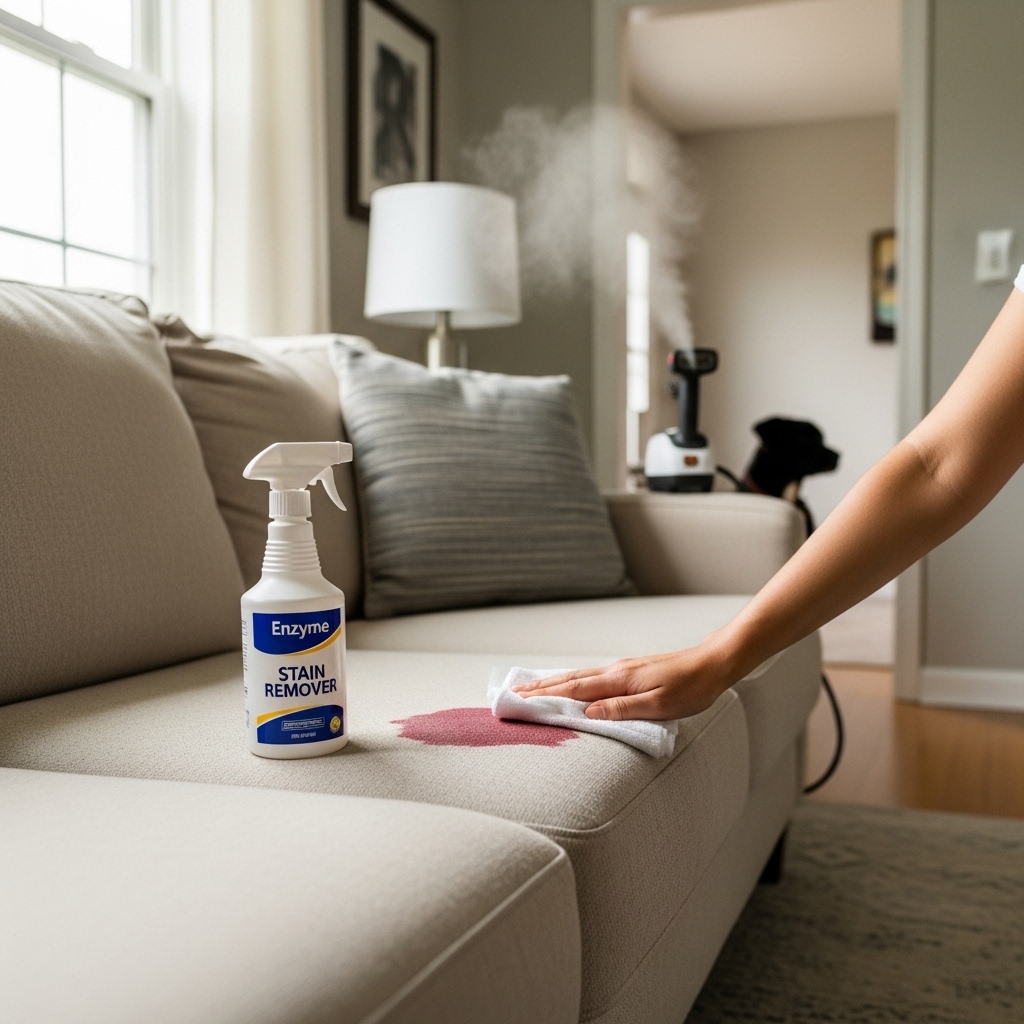Wine splashes during a celebration and pet mishaps between walks are two of the most common reasons Elizabeth, New Jersey homeowners call for help with upholstery. These spills seem simple at first glance, but their chemistry—tannins in wine and proteins in pet accidents—interacts with fibers in very different ways. Knowing what to do in the first moments, and how professionals treat the problem afterward, can make the difference between a barely noticeable mark and a permanent reminder. If you want reliable guidance and careful, fabric-safe results, explore local pros who focus on thorough sofa cleaning and understand the science behind stain removal.
Elizabeth living rooms host birthday toasts, game-day gatherings, and daily family time. In these active spaces, a spill is not a disaster—it is an opportunity to act quickly and prevent long-term damage. The key is understanding the stain, resisting the urge to scrub, and calling in expertise when deeper treatment is needed.
Why Wine and Pet Stains Behave Differently
Red wine contains dyes and tannins that bond readily with fibers, especially natural textiles. The longer the wine sits, the deeper it migrates, sometimes leaving a faint ring even after surface moisture is blotted. Pet accidents, on the other hand, involve proteins and uric compounds that can create odor challenges beyond the visible mark. If not addressed properly, lingering residues can draw moisture from the air and continue to produce smells when the room warms up.
Immediate Steps for Wine Spills
- Blot promptly with a clean, white, absorbent cloth—do not rub. Press firmly to lift liquid without distorting fibers.
- Work from the outside of the stain toward the center to reduce spreading.
- If you have a small, fabric-safe spotter recommended for your upholstery type, test it in an inconspicuous area first. Use it sparingly and continue to blot.
- Avoid hot water, which can set dyes, and skip multi-product “experiments” that complicate later treatment.
Speed and restraint are your allies. Over-wetting or aggressive scrubbing often makes wine stains worse.
Immediate Steps for Pet Accidents
- Blot up moisture with a clean, white cloth, changing sections of the cloth as they become saturated.
- If solids are present, lift them gently with a spoon—do not smear or push them deeper into the fabric.
- Avoid strong deodorizers; masking the smell does not remove the source and can interfere with later treatments.
- Increase airflow to discourage lingering odors until a thorough treatment can be performed.
If the accident has reached the cushion foam, professional attention becomes especially important because foam can hold residues that basic surface cleaning cannot reach.
Professional Approach to Wine Stains
After inspection and colorfastness testing, a technician applies a tannin-focused treatment with careful dwell time, followed by steam-assisted extraction and a neutralizing rinse. If the dye load is heavy or the stain is older, multiple light passes may be used to avoid stressing the fiber. The goal is to reduce the visibility of the mark and restore an even, natural look without overworking the fabric.
Professional Approach to Pet Stains and Odors
Pet-related spots call for a two-part strategy: visible stain reduction and odor source removal. Enzyme-based or oxidizing treatments (selected based on fabric and testing) target the compounds that cause smells. Technicians often perform deeper flushing to reach residues within the cushion. Airflow is encouraged during and after the visit to speed drying and help reset the space.
Elizabeth-Specific Considerations
Local conditions influence both stains and cleaning response. In humid months, cushioning can hold moisture longer, requiring stronger airflow for drying. During winter, closed windows mean indoor air must be managed carefully—fans and gentle heat are helpful. Multi-family buildings may require extra planning for equipment access; clear hallways and entries make everything smoother.
Fabric Matters: Microfiber, Linen, Cotton, and More
Microfiber can be very forgiving with wine when treated promptly, while natural fibers like linen and cotton are more susceptible to dye bonding. Blends behave somewhere in the middle. Your technician will tailor chemistry and moisture to the fabric to prevent over-wetting and preserve texture. Decorative trims, tufting, and piping receive special attention to avoid distortion.
Common Pitfalls to Avoid
- Rubbing aggressively, which fuzzes fibers and spreads the stain.
- Using colored cloths or paper towels that can transfer dye.
- Layering multiple home remedies that react unpredictably with one another.
- Over-wetting cushions, which slows drying and may encourage odor.
Deodorizing That Actually Works
True freshness comes from removing the source of odor—not covering it. That is why thorough extraction and fabric-safe chemistry matter. If you have tried to mask smells with sprays, you may have noticed they fade quickly or mingle with the underlying odor. A proper treatment reduces the cause, and a neutralizing rinse helps the sofa feel clean rather than perfumed.
Drying Strategy After Treatment
Airflow is your best friend. Position cushions so air reaches all sides, run ceiling or portable fans, and open a window if weather allows. Avoid placing cushions back into tightly enclosed frames until they are dry to the touch; this prevents a musty smell from developing inside the sofa body.
Prevention Tips for Wine and Pets
- Use washable throws during parties or in your pet’s favorite napping zones.
- Keep a small kit with white cloths and an upholstery-friendly spotter for quick responses.
- Vacuum weekly with an upholstery tool to remove hair and dust that can complicate stain removal.
- Train pets to consistent bathroom routines and address any medical concerns that may contribute to accidents.
Why Professional Help Is Worth It
Beyond tools and chemistry, experienced eyes make the difference. Technicians judge when to escalate or hold back, which preserves fibers and avoids irreversible changes. They also manage moisture and airflow so that cleaning leaves the sofa refreshed, not damp.
What to Tell Your Technician
Share the timeline—when the spill happened, what you tried, and any history of similar incidents on the sofa. This context helps select the right treatment and avoids repeating a method that did not work previously. Photos of the spill at the time it happened can also be useful, especially if the mark has changed as it dried.
Mid-Visit Questions to Ask
- How did the fabric respond to spot testing?
- Is deeper flushing needed for cushion foam?
- What is the estimated dry time today?
- Are there simple aftercare steps I should follow this week?
If you want a careful, chemistry-aware approach to challenging stains, consider a local team that specializes in effective, fabric-safe sofa cleaning and odor reduction.
Frequently Asked Questions
Q: Can all red wine stains come out completely? A: Some deep or older stains may leave a faint shadow, but many respond well to targeted treatment and careful extraction.
Q: Will cleaning remove pet odors for good? A: When residues are thoroughly addressed—including inside cushion foam if needed—odors are greatly reduced. Recurrence may indicate deeper sources that require additional attention.
Q: How soon should I act after a spill or accident? A: Immediately. Blotting quickly prevents deeper migration and makes professional treatment more effective.
Q: Is steam cleaning safe for my fabric? A: With proper testing and moisture control, yes. The process is tailored to fabric type and dye stability.
Q: How can I protect my sofa during gatherings? A: Use washable throws in high-risk zones, set coasters and trays within easy reach, and keep white cloths handy for quick response.
Q: Will strong fragrances solve odor issues? A: No. True freshness comes from removing the source, not covering it with scent.
Restore Comfort and Confidence in Your Living Room
Quick action and professional treatment can turn spills and pet accidents into minor bumps, not lasting eyesores. When you are ready for cleaner fabrics, calmer air, and renewed peace of mind, schedule expert sofa cleaning and enjoy a living space that welcomes guests—and pets—with comfort and grace.

